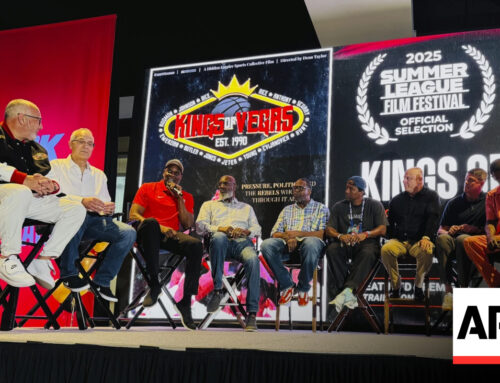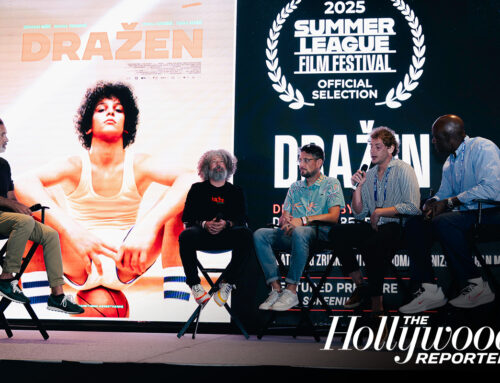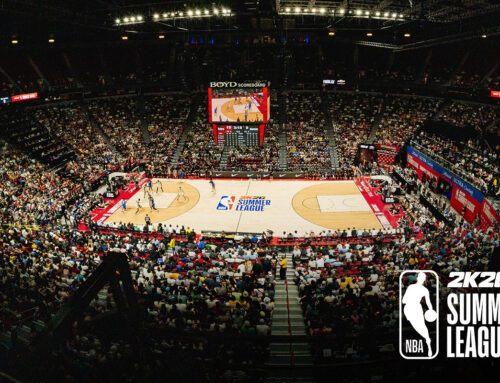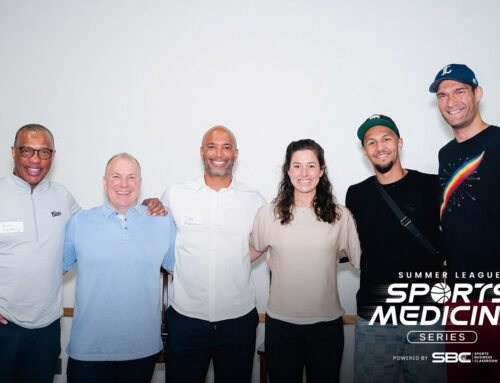By Jordan Cuellar
As the world continues to evolve, creative design is assisting in driving the visual aesthetics. Although we’re only a month away from the end of 2019, I continue to see things out in the design world gaining notoriety that can transition well into the New Year. It’s good to reflect on what’s happened as it will only help to dictate what we can expect in 2020, especially with technology being more of a dominant force in our day to day lives.
Here are 5 of the growing design trends I’ve noticed in 2019 along with my 2020 predictions:
1) Less is by Far More
The powerful Less Is More method still holds strong today and we won’t see it going away anytime soon. Negative space is a must in layouts, allowing design elements to breathe and act freely, discouraging any unnecessary clutter. This concept has been heavily integrated through web and app design. The growth of technology has pushed the landscape of minimal design even further as screens scale smaller, making readability a prominent factor when designing.
A lot of companies embrace the less is more method through their visual identity, branding and ad campaigns. Large type, simple shapes, minimal use of colors and open compositions set the tone for this ongoing trend. Packaging and labels have been driving further down this route utilizing as little as a logo, limited use of type and 1-2 colors.
2020 Prediction: As mentioned with tech and digital increasingly being part of our lives, design will be more simplified and copy easier to read. Limiting the usage of elements like colors, amount of text, imagery and more will be the trick to master without being too mundane. The overall purpose is to create an easier experience for the end user and potential customers to engage in.
2) Typography
BIG & BOLD. Much of 2019 saw large and maximum type take over the world. This is hard to ignore as large text creates a focal point by making words, statements and headlines loud and clear. In some cases, oversized text has replaced photography and illustrations as a main design element.
Designers have become more experimental and playful with typography with techniques like:
- Overlapping & Layering Text allows type to interact with other elements in a design. Overlapping text sits on top of other elements and negative space beside, above or below it. Layering provides depth to the visual as certain parts of the type are masked behind an element and other parts sit on top.
- Outline Type creates a different type of contrast and allows for openness within the text. It also looks aesthetically pleasing to the eye if you don’t want anything straight in your face.
- Highlighted Type is an effective way to stand out when laid on top of images, especially when using bright or dark and bold colors.
- Custom Lettering is a common theme over the years and has been growing much more. Custom lettering has been mainly used for important words, headlines, statements and phrases, displaying a pleasing and playful touch to whatever message is being portrayed. The handwritten and imperfect usage creates a humanistic approach, making the words feel personal.
- Repeated Text adds emphasis to words or phrases and used often throughout a full page. Repeated text creates a different experience without the need of any other design elements. A lot of that inspiration has come from ever so popular Thank You bags.
- Neon signs are a favorite for everyone – both creators and consumers. It’s an added bonus for companies, restaurants, coffee shops and really attracts customers by providing an inviting feeling. It’s difficult not to look at when you pass by them.
2020 Prediction: Still big and bold type, but more simple. As we transition further along the digital realm (i.e phones, watches, car displays, etc..) designers will have to rely on big and clean type to make things easier to read. I’ve seen a lot of brands and influencers use large type on social media through specific content (i.e sharing advice and motivational posts) and I see it being adopted amongst others in the new year. Going off of readability, lowercase words will certainly be into play as it pertains to a modern look and feel. Although Sans-serif typefaces are a preferred method, serifs will be used more often to help break away from the norm.
3) Illustration & 3D (and Animation)
Just like typography, 2D Illustrations & 3D both respectively make huge contributions to design when photography or video isn’t present. They certainly help break away from the same old generic stock photos.
- 2D illustrations are able to provide a personal touch and different impression from use of character elements to simple, abstract and geometric shapes. This technique made a huge play all throughout packaging, apps, event branding, promotional campaigns, infographics, presentations and web sites. Tons of conferences and music festivals embrace illustrations into their branding, giving off what I feel is to have a fun time.
As far as apps go, you see illustrations being incorporated throughout Instagram Stories and Snapchat Filters, emojis and animated gifs.
With sustainability becoming more prevalent, illustrators have incorporated more floral, tropical and botanical pieces into their work – embodying a serene and soothing experience.
Illustrations have also played well with photography & video. People love retro as the 80s and 90s made a resurgence through the use of bright colors and eccentric shapes. Fashion brands and editorial welcome illustration with photos.
- 3D compositions add a more realistic and unique approach to design while still grasping illustration tendencies. It goes into the notion of a futuristic world and creates volume with usage of type, geometric shapes and characters. Artists and designers are able to easily create 3D renderings of products to further explore ideas.
- Animations are grouped within this trend because from what I’ve seen they consist of a lot of 2D & 3D illustrations. 2D Animations create slight movement in flat spaces that have been applied within ad campaigns, informative/instructional videos and social content. Brands have incorporated the use of animations with their logos to give new life and excitement. Use of 3D animations have been prevalent in big brand ad campaigns where they discover higher conversion rates. Animations also break away from the norm and provide a different type of life.
2020 Prediction: With minimalism being so dominant, simple and ornate illustrations will be kept as elements that won’t distract too much from what’s being presented. Another stylistic approach with illustrations would be free-flowing and fluid like shapes to create more movement in a flat looking space when animations are around. Illustrators will find a way to become more involved in creating within AR/VR technologies, and 3D designs will become more experimental and challenge static and flat design with the progression of software and other tools.
4) Colors/Patterns/ Textures
Designers have had plenty of fun with colors this year, more so with bright and vivid, gradients and even pastels.
- Gradients, vivid colors and duotones have gradually made its way to the forefront all year long. It creates a futuristic and dreamlike ambiance with a sense of transition within the design. Whether it be used primarily as a background, accent, or as a photo overlay, gradients are always appealing to the eye. YouTube thumbnails and playlist cover images on Spotify rely on bright and vivid colors to attract consumers to click.
- Bright, neutral and pastel colors have been fitting well within minimalist design space. Bright colors bring back a sense of the 90s. Bright and solid colors have been used through posters, social media posts and a lot on websites and presentations, helping break between different sections. Pastels create a sense of calmness and less distraction within branding, fashion, illustration and other decor.
- Patterns and textures are also grouped with colors because I feel they assist in creating contrast when colors are limited. From dark and grungy to shiny and metallic to light & subtle, they help dictate the mood designers are trying to create.
2020 Prediction: Designers and other creatives will explore more use of gradients and vivid colors to take on the futuristic, innovative, and stunning look. Large spaces of colors will assist bold and limited typography on print and web layouts. I can see hints of vivid colors mixed in with monotone/monochromatic schemes. Earthy colors can make a big splash as we move further into the direction of a more eco-friendly and sustainable environment.
5) UI/UX Design
UI and UX Design embodies all of the previous trends mentioned. We experience UI/UX design on a daily basis when scrolling through our phones and browsing websites on our computers.
Less is more: From a minimalist factor, a lot of negative space has been key to letting certain elements stand out on its own and lets information rest well with the viewer.
Typography: Large type has taken up chunks of space, in their own way without being too distracting. It makes it easier to read especially with nothing else in the way of it.
Illustration: Illustrations have been used a lot through app and web designs. They add a more personal touch and ensures a less monotonous look and feel. Custom icon illustrations have been able to separate brands as well, adding their own personal touch.
Animation: A lot of subtle animation has enhanced the user experience of websites and app design. While scrolling, you see slight transitions with the movement of text, buttons and photos fading in ever so smoothly. Some sites incorporated smooth color transitions while scrolling through sections. Parallax effects have also maintained a presence over the years. Buttons and icons have a variety of hovering effects with color changes, lifting up, spinning and so on. Animations give life to any site and app.
Color: An ongoing theme that’s been huge are the light and dark theme features. The dark theme gives your interface a whole new approach and has been applied to phones, laptops, social media and design applications. Just like everywhere else, gradients have been common a common them with UI/UX, giving off a sense of depth. Bright and vivid colors have been used as secondary colors against either light or dark colored backgrounds.
Layout: Although we enjoy clean and an orderly layout, the broken grid theme has made a constant push and incorporates the use of overlapping elements such as text and photos, providing a fresh new look. They’re unique and appealing when executed the right way. Split screens have been a common theme as well, combining related elements (one side a large photo/graphic and the other full of text on solid color background) without having to interrupt one another.
Videos: Videos have been essential to any website, mainly one of the first things you see when browsing through sites. They convey the story of the brand and make the initial statement of who they are and what they represent.
2020 Prediction: Minimalism is forever the ongoing trend and we can expect UI/UX designers find ways to keep things more simple and efficient, creating an easier free-flowing experience. UI/UX designers will find other creative and subtle tactics with animations so they don’t take up the loading process. I think we can expect more use of gradients, but limiting the contrast with a smaller gamut. Custom illustrations will continue to be in demand for brands to distinguish their identity from others.
Final Thoughts
The main ongoing theme will be minimalist design with the ever-growing tech space. That doesn’t mean designers won’t find a way to think beyond that, but simplifying things will become a bigger challenge for designers. With the attention span of users being so short, designers will need to get straight to the point with what they decide to show and be captivating. We will see how technology dictates the impact of design and how designers are able to adapt…or break the rules. I’m excited to see how 2020 shapes up!
Written by:






